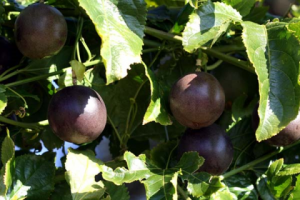
Passion fruits scientifically known as Passiflora edulis are not only beneficial in diet but when properly looked after, can enable a farmer generate significant income. But how you grow and tend them will determine what you can get.
Passion fruits are a climbing vine, which grows fast. In Uganda there are three most common fruit varieties; the purple Grandilla passion fr
uits which are sweet, have high quality juice, with a good aroma and highly marketable compared to the yellow passion ones that are slightly bigger and more acidic. These are locally known as Masaka fruit variety.
Yellow passion fruit also known as the tropical passion fruit is grown for its aromatic but rather acidic pulp Compared to the yellow passion fruits, the purple fruits are susceptible to diseases.
Kawanda hybrid that is highly resistant is a cross between the local purple and the yellow passion fruits.
ALSO READ:Ministry to enhance farmers’ resilience towards climate change
Preparation
Select an area whose soil is favorable for passion fruit growing. Site selection also involves soil testing, pest and disease survey, weather; light availability, temperature and water. Farmers should select planting materials which are disease free and of appropriate variety, compatible with the area and soil.
Farmers who grow passion fruits for commercial purposes should practice or incorporate drip irrigation.
Care and management
Most farmers use old fishing nets which they lay on wooden frames as support for the passion fruit stems to grow for better yields.
To further boost the plant growth, add fertilizer like NPK and CAN fertilizer at the climbing stage and when the branches start to develop. Also uses human manure can be used.
Keep watching for pests and diseases. According to experts, the most damaging disease is the passion fruit virus, which has no cure as it normally comes with the planting material.
“Therefore, farmers should select virus free scions. Check to ensure the leaves are not mottled and the shoots are not stunted, which are typical signs of the virus,” experts advise.
Additionally, for disease control, get an appropriate fungicide which must be applied to the leaves correctly, in terms of dosage. Similarly, leaves with symptoms should be removed, buried or burnt.
Harvesting
During harvesting, researchers recommend that farmers pick only ripe passion fruits which are not yet scorched. Usually fruits which have dropped can be collected once or twice a week. During the rainy season they should be picked up every other day and kept in a cool place.
Harvest ripe passion fruits only when the calyx has dried up leaving a small stalk attached. This increases the chances of them staying fresh for a longer period of time.
Yields
if one uses approved purple passion fruits, he or she will harvest five tons per acre per season or a year. “Yellow passion fruits on the other hand yield an amount of nine tons per acre per year
On the market, a bag or sack of passion fruit, that weighs 100kg, costs between Shs200, 000 and Shs400, 000, depending on the season. A farmer can harvest between Shs200-400million in a year from one acre.
All in all, incorporating climate smart farming practices such as those discussed by experts is one way farmers can smile their way to the bank or better still reap big in passion fruit growing.
Challenges
Anyone can start a passion fruit growing venture but not everyone gets past the first roadblocks. The presence of viruses and die back diseases in high frequencies, thefts of the ripe fruits and birds that destroy flowers are the main challenges.
ALSO READ:Army worm to stay in farmers gardens as more research is done


















